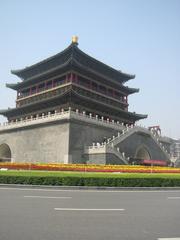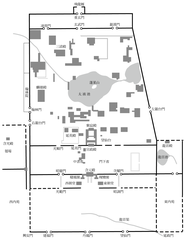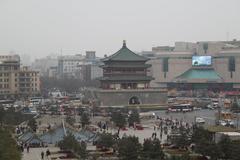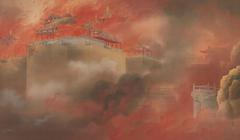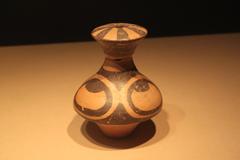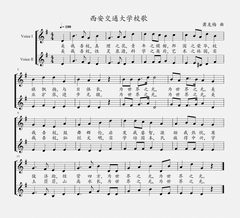
Visiting Hours and Tickets for Fortifications of Xi’an, Xi’an Historical Sites
Publication Date: 24/07/2024
Introduction to the Fortifications of Xi’an
The Fortifications of Xi’an, particularly the Xi’an City Wall, stand as one of China’s most significant historical landmarks. These ancient structures are a testament to the city’s rich past and a marvel of ancient Chinese military architecture. Constructed primarily during the Ming Dynasty under the rule of the Hongwu Emperor, the wall was built to protect the city from invasions and has become a symbol of Xi’an’s historical significance and cultural heritage (Travel China Guide). The wall’s origins date back to the Sui Dynasty, with significant enhancements and renovations during the Ming and Qing dynasties, reflecting the evolving military strategies and construction techniques of ancient China (Xi’an Ease). Today, the Xi’an City Wall is a vibrant part of the city’s modern landscape, hosting cultural events, marathons, and offering unique experiences for visitors through walking and cycling tours (CNN). This guide aims to provide detailed information on the history, architecture, visitor tips, and significant cultural aspects of the Xi’an City Wall, ensuring that your visit is both informative and memorable.
Contents Overview
- Introduction
- History of the Fortifications of Xi’an
- Origins and Early Construction
- Ming Dynasty Renovation
- Enhancements During the Qing Dynasty
- 20th Century and Modern Preservation Efforts
- UNESCO and National Heritage Status
- Architectural Features
- Construction Techniques
- Historical Significance
- Visitor Information
- Xi’an City Wall Visiting Hours and Tickets
- Travel Tips
- Modern-Day Use and Cultural Events
- Preservation and Conservation
- Visitor Experience
- FAQ
- Conclusion
History of the Fortifications of Xi’an
Origins and Early Construction
The origins of the Xi’an City Wall trace back to the Sui Dynasty (581-618 AD), when the old imperial city of the Western Han Dynasty (202 BC – 8 AD) was severely damaged. Consequently, a new city was constructed and completed in 583 AD, marking the beginning of Xi’an’s prominence as a capital city during the Sui and Tang dynasties. This period saw Xi’an become the largest-scaled city in Chinese history (Travel China Guide).
Ming Dynasty Renovation
The modern layout and dimensions of the Xi’an City Wall were established during the Ming Dynasty under the rule of the Hongwu Emperor, Zhu Yuanzhang. In 1370, Zhu Yuanzhang initiated a comprehensive renovation of city defenses across the country, including Xi’an. The wall was primarily composed of tamped earth at this time, reflecting the construction techniques of the era (Xi’an Ease).
Enhancements During the Qing Dynasty
Further significant renovations occurred during the Qing Dynasty, particularly between 1781 and 1784 under the governance of Bi Yuan. During this period, the moat was dredged, and additional improvements were made to the wall, including the construction of watchtowers, drawbridges, and other defensive structures (Xi’an Ease).
20th Century and Modern Preservation Efforts
In the 20th century, the Xi’an City Wall underwent several phases of preservation and renovation. In 1953, the “1953-1972 Xi’an City Master Plan” was implemented to protect the urban layout of the ancient city. However, some demolition occurred in violation of this plan, leading to the 1959 “Notice on the conservation of the City Wall of Xi’an” by the State Council, making the preservation of the Xi’an City Wall a national concern (Xi’an Ease). In 1983, the Xi’an municipality carried out extensive renovations, refurbishing several towers and restoring the moat (Wikipedia).
UNESCO and National Heritage Status
The Xi’an City Wall has been recognized for its historical and cultural significance on multiple levels. In March 1961, it was designated as a National Historical and Cultural Unit. In 2008, the wall was proposed as a UNESCO World Heritage Site under the title “City Walls of the Ming and Qing Dynasties” and was included in the tentative list of World Heritage Sites (Wikipedia).
Architectural Features
Construction Techniques
The construction of the Xi’an City Wall was an impressive feat of Ming Dynasty engineering. Skilled workers combined large bricks and earth to form a strong and compact structure. The core was made from a mixture of earth, lime, and glutinous rice extract, providing stability and resistance to the elements. Grey bricks were carefully laid to form the outer layer, adding durability and defense. Strategic features like watchtowers, barbicans, and gate towers enhanced its protective capabilities (Wild Great Wall).
Historical Significance
The Xi’an City Wall is not just a physical barrier but also a symbol of the Ming Dynasty’s power and wisdom. It served as a primary form of defense against enemy attacks and played a crucial role in the city’s military strategy. The wall’s construction and subsequent renovations reflect the historical importance of Xi’an as a political and cultural center in Chinese history (CNN).
Visitor Information
Xi’an City Wall Visiting Hours and Tickets
The Xi’an City Wall is open daily from 8:00 AM to 10:00 PM. Tickets can be purchased at the main entrance and cost ¥54 for adults. Discounts are available for students, seniors, and children. It is advisable to check the official website or local sources for any changes in visiting hours or ticket prices.
Travel Tips
- Best Time to Visit: The best time to visit the Xi’an City Wall is during the spring and autumn months when the weather is mild and pleasant.
- Accessibility: The wall is accessible at several points around the city, with the South Gate being the most popular for tourists.
- What to Bring: Comfortable walking shoes, sunscreen, and a hat are recommended, especially during the summer months. A camera is a must for capturing the stunning views.
- Local Cuisine: Don’t miss out on trying local delicacies such as biangbiang noodles and roujiamo (Chinese hamburger) at nearby eateries.
Nearby Attractions
- Bell Tower and Drum Tower: Located in the heart of Xi’an, these historic towers are a short distance from the city wall and offer panoramic views of the city.
- Muslim Quarter: A vibrant area known for its bustling markets and delicious street food, perfect for exploring after a visit to the wall.
- Shaanxi History Museum: One of the best museums in China, showcasing artifacts from Xi’an’s long and storied history.
Modern-Day Use and Cultural Events
Today, the Xi’an City Wall is a prominent feature of the city’s landscape and a popular tourist attraction. It has been incorporated into the city’s infrastructure, standing as a testament to Xi’an’s historical nature while also serving as a functional part of the urban environment. The top of the wall has become a city playground, with bike tours and walking paths offering unique perspectives on the city. The annual Xi’an City Wall International Marathon, held since 1993, is a local highlight that attracts thousands of athletes from China and overseas (CNN).
Preservation and Conservation
The preservation and conservation of the Xi’an City Wall have been ongoing efforts, with significant renovations and refurbishments carried out over the years. These efforts ensure that the wall remains a well-preserved example of ancient Chinese military architecture and continues to be a valuable cultural and historical asset for future generations (Xi’an Ease).
Visitor Experience
Visitors to the Xi’an City Wall can explore its rich history and architectural features through various activities. Walking or cycling along the top of the wall provides panoramic views of the city and a unique vantage point to appreciate its historical significance. The wall is also a popular spot for photography, especially during the late afternoon when the light is ideal. The wall is illuminated at night, offering a stunning visual experience for visitors (Tour Beijing).
FAQ
Q: What are the visiting hours for the Xi’an City Wall? A: The Xi’an City Wall is open daily from 8:00 AM to 10:00 PM.
Q: How much are tickets to the Xi’an City Wall? A: Tickets cost ¥54 for adults, with discounts available for students, seniors, and children.
Q: Is the Xi’an City Wall accessible for people with disabilities? A: Yes, the wall is accessible at several points, with the South Gate being the most popular for tourists.
Q: What are some nearby attractions to visit along with the Xi’an City Wall? A: Nearby attractions include the Bell Tower and Drum Tower, the Muslim Quarter, and the Shaanxi History Museum.
Conclusion
The Xi’an City Wall stands as a remarkable example of ancient Chinese military architecture, reflecting the city’s historical significance and the ingenuity of its builders. Its preservation and integration into the modern cityscape make it a must-visit destination for anyone interested in Chinese history and culture. Plan your visit today and experience the grandeur of this historical monument firsthand.
Citations and Sources
- Travel China Guide. (n.d.). Xi’an City Wall. Retrieved from https://www.travelchinaguide.com/attraction/shaanxi/xian/citywall.htm
- Xi’an Ease. (2021, September 17). Preservation and Conservation of the Xi’an City Wall. Retrieved from https://www.xianease.com/2021/09/17/preservation-and-conservation-of-the-xian-city-wall/
- CNN. (n.d.). China Xi’an City Wall. Retrieved from https://www.cnn.com/travel/article/china-xian-city-wall/index.html
- Wikipedia. (n.d.). Fortifications of Xi’an. Retrieved from https://en.wikipedia.org/wiki/Fortifications_of_Xi%27an
- Wild Great Wall. (n.d.). Xi’an City Wall. Retrieved from https://wildgreatwall.com/xian-city-wall/
- Tour Beijing. (n.d.). How to Visit Xi’an City Wall. Retrieved from https://www.tour-beijing.com/blog/shaanxi-travel/xian-travel/xian-attractions-tips/how-to-visit-xian-city-wall



